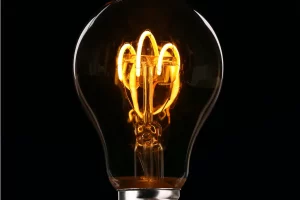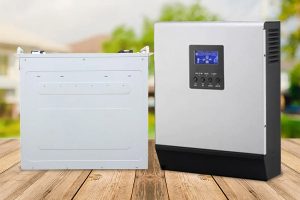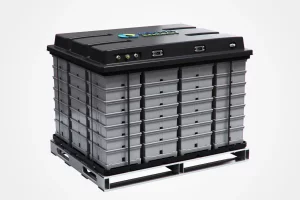As the global energy landscape shifts towards sustainability, energy storage systems (ESS) for residential homes are becoming increasingly significant. These systems not only enhance energy independence but also optimize the use of renewable energy sources, reduce energy costs, and provide reliable backup power during outages. This comprehensive guide explores various aspects of residential energy storage systems, including types, benefits, key considerations, popular products, installation, maintenance, and future trends.

Types of Energy Storage Systems
Battery Storage Systems
Lithium-Ion Batteries
Lithium-ion batteries dominate the residential energy storage market due to their high energy density, long lifespan, and decreasing costs. They are known for their efficiency, durability, and versatility. Popular models include the Tesla Powerwall, LG Chem RESU, and Sonnen, all of which offer robust performance and integration capabilities.
Lead-Acid Batteries
While older than lithium-ion technology, lead-acid batteries are still used in some residential systems. They are generally cheaper upfront but have a shorter lifespan and lower efficiency. They require more maintenance and have a larger footprint compared to their lithium-ion counterparts, making them less desirable for many homeowners.
Flow Batteries
Flow batteries are an emerging technology that offers potential advantages in lifespan and scalability. They work by storing energy in liquid electrolytes contained in external tanks, which can be scaled up as needed. Although currently more expensive and less common for residential use, they hold promise for the future of energy storage.
Thermal Storage Systems
Thermal storage systems store energy in the form of heat or cold, which can be used for heating or cooling applications. These systems are less common for direct electricity storage but are useful for optimizing HVAC systems and reducing overall energy consumption. For instance, ice storage air conditioning systems store ice during off-peak hours to be used for cooling during peak demand times.
Key Benefits
Energy Independence
Energy storage systems enable homeowners to store energy generated from renewable sources, such as solar panels, for use during periods when production is low, such as nighttime or cloudy days. This reduces reliance on the grid and increases self-sufficiency.
Cost Savings
By storing energy when electricity rates are low and using it during peak demand times when rates are higher, homeowners can significantly reduce their energy bills. Additionally, some energy storage systems can participate in demand response programs, where utilities pay users to reduce their consumption during peak times, providing an additional source of savings.
Backup Power
In areas prone to power outages, having a reliable backup power source is crucial. Energy storage systems provide uninterrupted power supply to critical home appliances and systems, ensuring that lights, refrigerators, and medical devices remain operational during blackouts.
Grid Services
Advanced energy storage systems can offer grid services by participating in utility demand response programs. These systems can help stabilize the grid by providing stored energy during peak demand periods or absorbing excess energy when production exceeds demand, often in exchange for financial incentives.
Key Considerations
Capacity and Power
Capacity: Measured in kilowatt-hours (kWh), capacity determines how much energy the system can store. Homeowners should assess their energy consumption patterns to choose a system with sufficient capacity to meet their needs.
Power: Measured in kilowatts (kW), power determines how much energy the system can deliver at a given time. A higher power rating means the system can support more or higher-load appliances simultaneously.
Battery Lifespan and Degradation
Battery lifespan is typically measured in cycles, with one cycle being a full charge and discharge. Over time, batteries degrade, resulting in reduced capacity and efficiency. Lithium-ion batteries generally have longer lifespans compared to lead-acid batteries, but all batteries will eventually need to be replaced.
Efficiency
Round-trip efficiency measures the percentage of energy retained after storing and retrieving it. Higher efficiency means less energy is lost in the process. Lithium-ion batteries tend to have higher round-trip efficiency compared to other types, making them more attractive for residential use.
Cost
Initial costs of energy storage systems can be significant, including purchase, installation, and permitting fees. However, these costs can be offset by long-term savings on electricity bills and potential incentives or rebates. It’s important to consider both upfront and long-term costs when evaluating the investment.
Integration with Existing Systems
Compatibility with existing solar PV systems or other renewable energy sources is crucial for seamless integration. Homeowners should ensure that the ESS is compatible with their current setup and meets their energy needs. Inverter requirements and whether the system can be easily integrated into the home’s electrical setup are also important factors.
Regulations and Incentives
Local regulations and building codes may affect the installation and use of energy storage systems. Additionally, various incentives, such as tax credits, rebates, and grants, can significantly reduce the overall cost. It’s essential to research and take advantage of available programs to maximize savings.
Popular Residential Energy Storage Systems
Tesla Powerwall
The Tesla Powerwall is one of the most well-known energy storage systems on the market. It offers high capacity, good efficiency, and integration with Tesla solar products. The Powerwall can be stacked for additional capacity and managed through a user-friendly app, making it a popular choice for many homeowners.
LG Chem RESU
The LG Chem RESU series provides various sizes and is known for its reliability and compatibility with many inverters. It offers a compact design and efficient performance, making it a versatile option for different residential setups.
Sonnen
Sonnen’s energy storage systems focus on smart energy management and integration with home automation systems. They offer a range of products designed to optimize energy use, support renewable energy integration, and provide reliable backup power.
Enphase Encharge
Enphase Encharge systems are known for their modular design, allowing for scalable storage solutions. They integrate seamlessly with Enphase microinverters, providing a comprehensive energy management system that optimizes solar energy production and storage.
Installation and Maintenance
Professional Installation: Due to the complexity of integrating energy storage systems with home electrical setups, professional installation is typically required. Installers will assess the home’s energy needs, ensure compatibility with existing systems, and comply with local regulations.
Maintenance: Energy storage systems generally require minimal maintenance. However, it’s important to monitor battery health, ensure proper ventilation and temperature control, and follow manufacturer guidelines to maximize lifespan and performance.
Future Trends
Decreasing Costs
Advancements in technology and manufacturing are driving down the costs of energy storage systems, making them more accessible to a wider range of homeowners. Continued innovation is expected to further reduce prices and improve performance.
Improved Technologies
Ongoing research into new battery chemistries, such as solid-state batteries, and alternative storage methods, like supercapacitors and thermal storage, promises better performance, longer lifespans, and greater efficiency.
Smart Grid Integration
The integration of smart home technologies and the Internet of Things (IoT) is enhancing the capabilities of energy storage systems. Smart grid integration allows for more efficient energy use, real-time monitoring, and optimization of energy storage and consumption patterns.
Regulatory Support
Governments and utilities are increasingly supporting residential energy storage as part of broader energy transition goals. Policies and incentives aimed at promoting renewable energy adoption and grid stability are expected to boost the growth of residential energy storage systems.
Conclusion
Investing in a residential energy storage system can offer significant benefits, including cost savings, energy independence, and environmental impact. By carefully considering the type, capacity, efficiency, and integration capabilities of the system, homeowners can maximize these benefits and contribute to a more sustainable future. As technology continues to advance and costs decrease, energy storage systems are poised to become an integral part of residential energy solutions.



